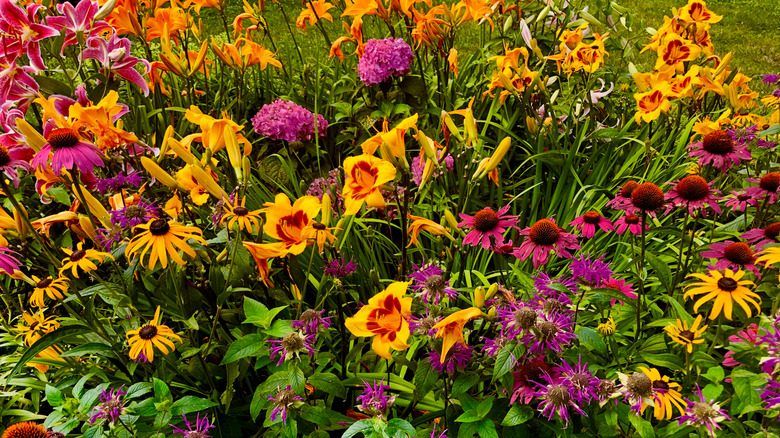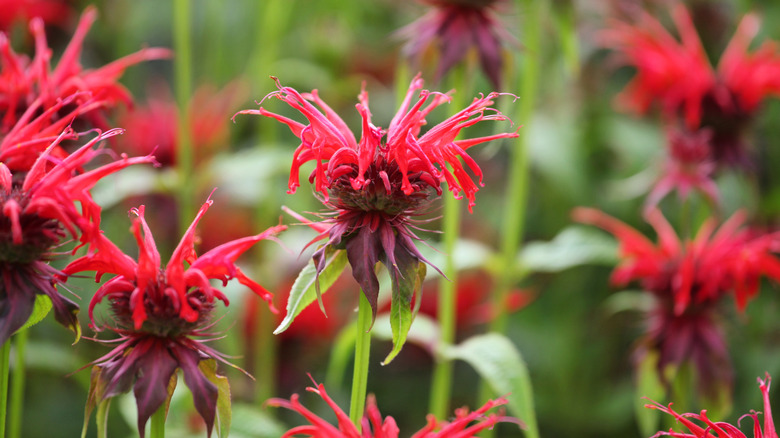The Colorful Plant Pollinators Love That You Can Also Use In The Kitchen
The neighbors might just see it as a pretty flower, but both nature-focused gardeners and kitchen experimenters know the many colorful secrets that lie within bee balm's blooms and leaves. With gorgeous, globe-shaped flower heads covered with tubular blooms, bee balm plants are multi-purpose, serving hummingbirds, food foragers, and herbalists alike. And for penny-pinching gardeners, it's easy to propagate bee balm through division. This flowering perennial herb is native to North America, providing a valuable source of nectar for local pollinators.
Long-tongued pollinators such as butterflies and bumblebees are especially attracted to bee balm's colorful, tubular flowers. It draws in songbirds as well and is one of the top flowers to plant for luring hummingbirds into your garden. But birds, butterflies, and bees aren't the only ones who get to enjoy feeding from these fragrant plants, since these herbs are safe for humans to use in the kitchen too. There are different species of bee balm with blooms of different colors — blue, purple, pink, white, and red — but for the best flavor, pick a bee balm with red blooms, such as the species Monarda didyma. More commonly known as scarlet bee balm,it can be grown in USDA Hardiness Zones 4 to 9.
How to use bee balm in the kitchen
Gardeners interested in experimenting with bee balm in the kitchen should take care not to apply pesticides to plantings for safety reasons, as well as to protect pollinators, since many pesticides will kill beneficial insects as well as pests. Once you have a well-established plant and the flowers are just about to open, harvest bee balm by picking stems from dry plants at the start of the day. Use a sharp pair of scissors to cut stems above leaf nodes, but trim back no more than one-third of the plant at a time to allow the herb to continue growing. You can either use the leaves and flowers fresh or dry them on a mesh tray for later use.
These colorful plants were introduced to colonists by Indigenous peoples, which is when scarlet bee balm got its nickname, Oswego tea. With a beguiling, pungent flavor that cooks describe as either orange-like or minty, both the leaves and flowers of bee balm can be used to make fragrant herbal teas. In the kitchen, the blooms and foliage of these colorful, pollinator-friendly plants can also be used to flavor salads, or the leaves can be added to cooked greens. Another compound in bee balm foliage is thymol — also found in oregano and thyme — which may inspire some chefs to use fresh or dried bee balm leaves as an herb to impart an oregano-like flavor, sprinkled on omelets or savory dishes of beans and rice.

